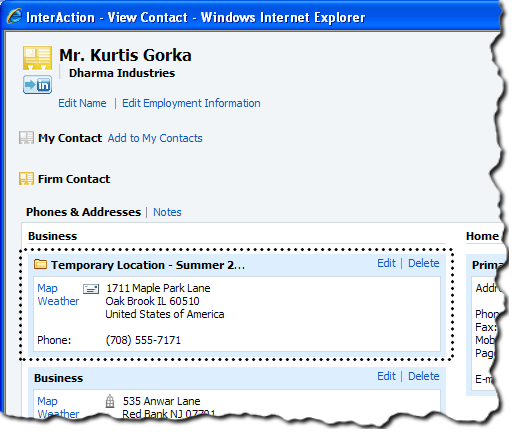Section Topics
Going Beyond User Contacts: Working Lists
Categories give users the ability to group their contacts into personal lists. They are useful for an individual user and his or her proxy. For details, refer to Categorizing Contacts.
When a larger group of users, such as a practice group or department, needs to work with the same list of contacts, InterAction provides working lists. These are collections of contacts associated with a particular task, such as a list of people to call in a week or a list of recruiting candidates.
Web Client users can view and manage working lists from the Working Lists page.

Displaying Working Lists in the Web Client
Although working lists are similar to user contact lists, there are some important differences:
- A user list is only available to the user and his or her proxy. A working list can be shared with any number of other users by setting security.
- A working list can contain firm contacts and working list-specific contacts (that is, contacts sourced in the working list). It cannot include user contacts. For example, a contact that is in a user’s list only cannot be added to a working list—it must be added to the firm first.
- Contacts within a working list can include phones and addresses visible within that list only. Unlike user contacts, a contact in a working list can have an unlimited number of phones and addresses.
- Working lists can include additional fields for tracking list-specific information about the contacts. A working list can have an unlimited number of additional fields.
- Users can create activities regarding the list. The user can designate who can see the activity. The activity can include any contacts in InterAction except those that are only in the user’s list.
-
Users can flag contacts on working lists. This is useful for marking contacts that require following up.

Phones Available Only Within a Working List
Details about working lists are available in the Configuring InterAction guide.
